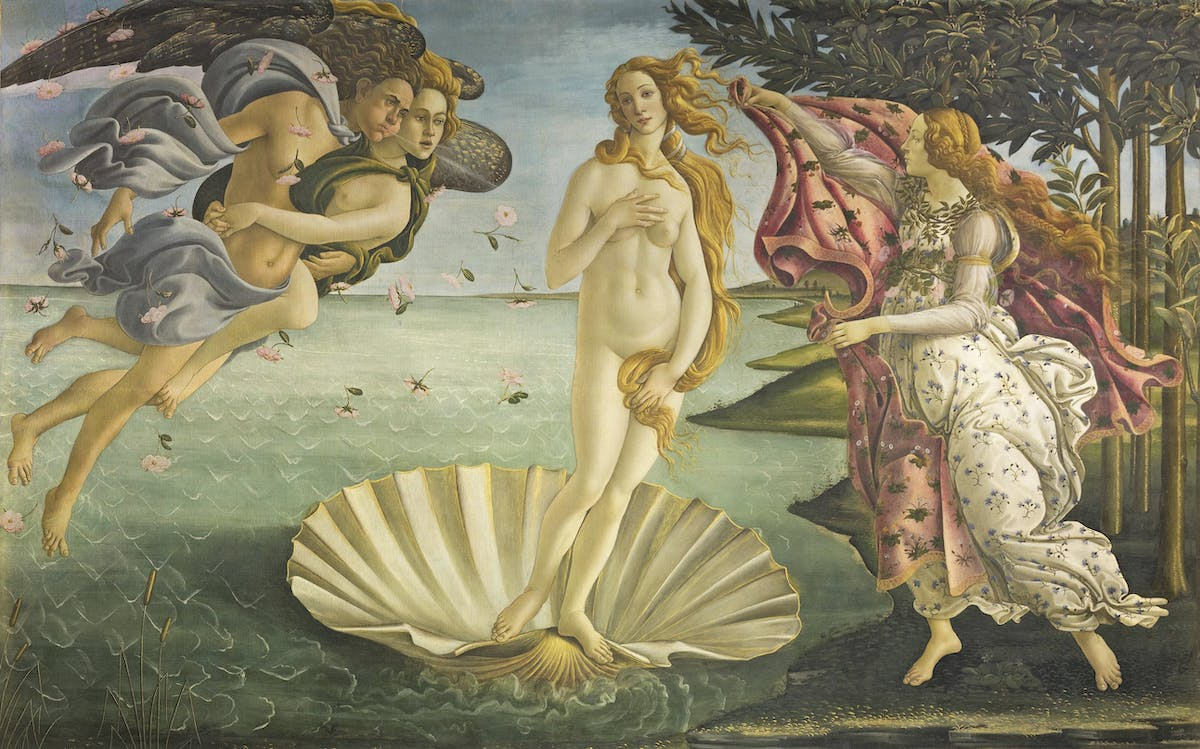The Italian Renaissance period flourished from the beginning of the 15th century to the end of the 16th century. One of the founders of the early Italian Renaissance was Sandro Botticelli, who became famous for his images of mythological subjects. The departure from religious painting in favor of mythological plots, as well as the use of the style of antiquity masters, allowed the artist to revive the principles of Greco-Roman art in medieval Europe. One of his most famous works, as well as the earliest manifestation of Renaissance ideas in art, is The Birth of Venus. This painting not only depicts a mythological plot that refers to classical art, but also uses a style and technique that emulates masters of antiquity.
Sandro Botticelli was an Italian painter of the second half of the 15th century, which places him in the early Renaissance period. The work of Botticelli represents a humanistic approach to art that flourished during the period of patronage of the Medici, who were supportive of the development of society at the expense of science and art. At the beginning of his career, Botticelli followed the traditional canons of that period depicting mythological and religious subjects. Working in Florence in his early years, Botticelli studied with Fra Filippo Lippi where he learned to depict unique human figures within religious plots. During this period, the artist was engaged in the creation of altarpieces and frescoes that would depict the life of saints or stories from sacred texts. These subjects were the most common for that period and continued the tradition of religious painting. The apogee of this period in the life of Botticelli was the work on the frescoes of the Sistine Chapel.
In the 1480s, Botticelli turned to classical mythological subjects, which marked the beginning of his work within the Italian Renaissance. The image of mythology is the return of artists to the classical subjects of Rome and Greece. As part of his subjects, Botticelli sought to revive the classical style in the depiction of human figures within the framework of mythological subjects. In particular, the experience of working on religious paintings helped him in this, where he learned to capture human figures in detail and with a particular melancholic style. The most significant works of Botticelli relating to the Renaissance try to emulate the techniques of the antiquity masters, use classical subjects, and also have the influence of neo-Platonism. The revival of European interest in the ideas of antiquity and in particular Plato is especially characteristic of Florence of that period under the auspices of the Medici.

The most famous work of the early Renaissance by Botticelli is the Birth of Venus. The plot of the picture depicts the goddess Venus, who appears on the shore from the depths of the sea after her full maturity. This work, along with Primavera, became the first depiction of a mythological plot on such a large scale in history in 15th century Italy. Botticelli was the first in Europe after the period of antiquity to return to illustrating mythological subjects, which marked the heyday of the Italian Renaissance. In the center of the composition of the painting is Venus standing in a clam shell. On either side of her is the god Zephyr and the minor goddess of the seasons. They welcome the appearance of the goddess in Cyprus or Cythera, which were revered by the Greeks as the islands of Venus.
The main elements that distinguish Botticelli’s Venus from the works of other artists of that period is not only the plot, but also the style. First of all, the artist depicted Venus in a classical pose, which refers to classic Greek female statues. This also includes the body proportions of the goddess, which are a resemblance of antiquity artists’ ideas of female beauty. Additionally, the goddess pose has a gothic influence with long lines and curved body shapes. It is also noteworthy that Botticelli depicted an imaginary wall, and not a real one, which emphasizes the mythological plot of his work. The proportions and pose of Venus are unrealistic, and the figures in the painting cast no shadows. This factor further separates Botticelli’s work from the dominant style of the period, which was often preoccupied with the realistic depiction of human figures.
Despite the desire to refer to the antique techniques of painting, Botticelli used the techniques of his personal style in this work. The artist did not add volume to his figures, but rather was concerned with composition and the transmission of emotions. Additionally, Botticelli did not strive for a detailed image of the background, which is noticeable in the image of the water surface and the trees in the picture. Unlike his contemporaries, Botticelli strove to depict the plot through the prism of human perception rather than a reflection of reality. This factor also makes him one of the most significant representatives of the early Renaissance. High Renaissance artists such as Leonardo, Raphael, Michelangelo and others would later use Botticelli’s ideas and refine them to create a unique style of neoclassical art.
Reference
Botticelli, S. (1485). Birth of Venus[Painting]. The Uffizi, Florence, Italy.